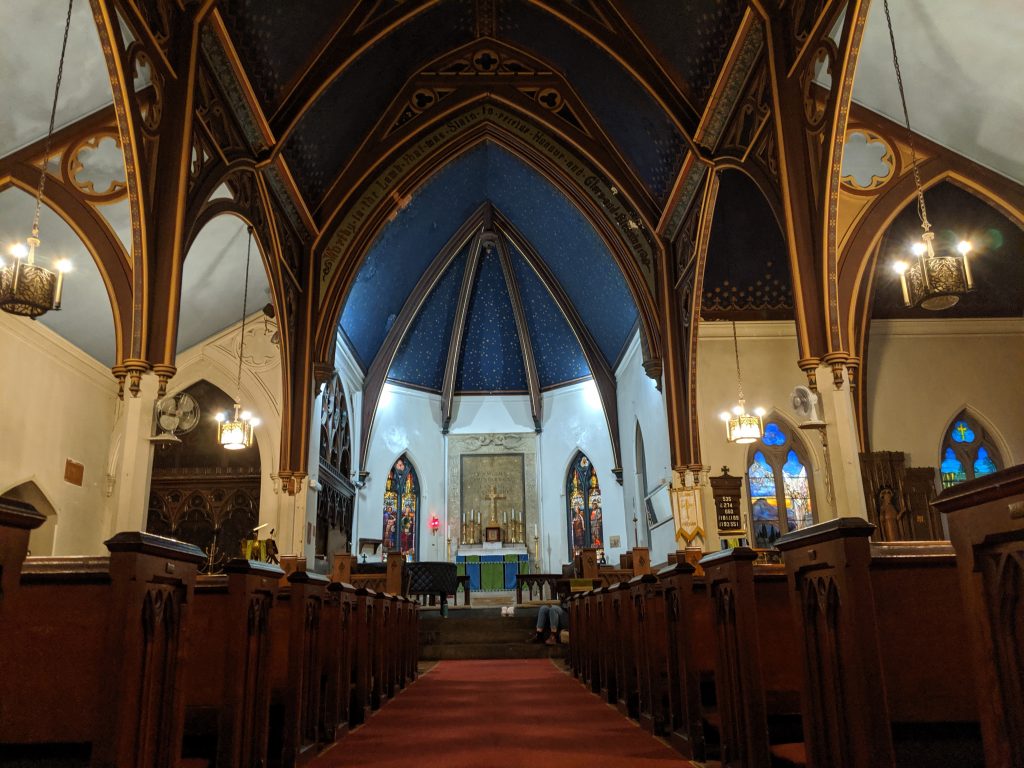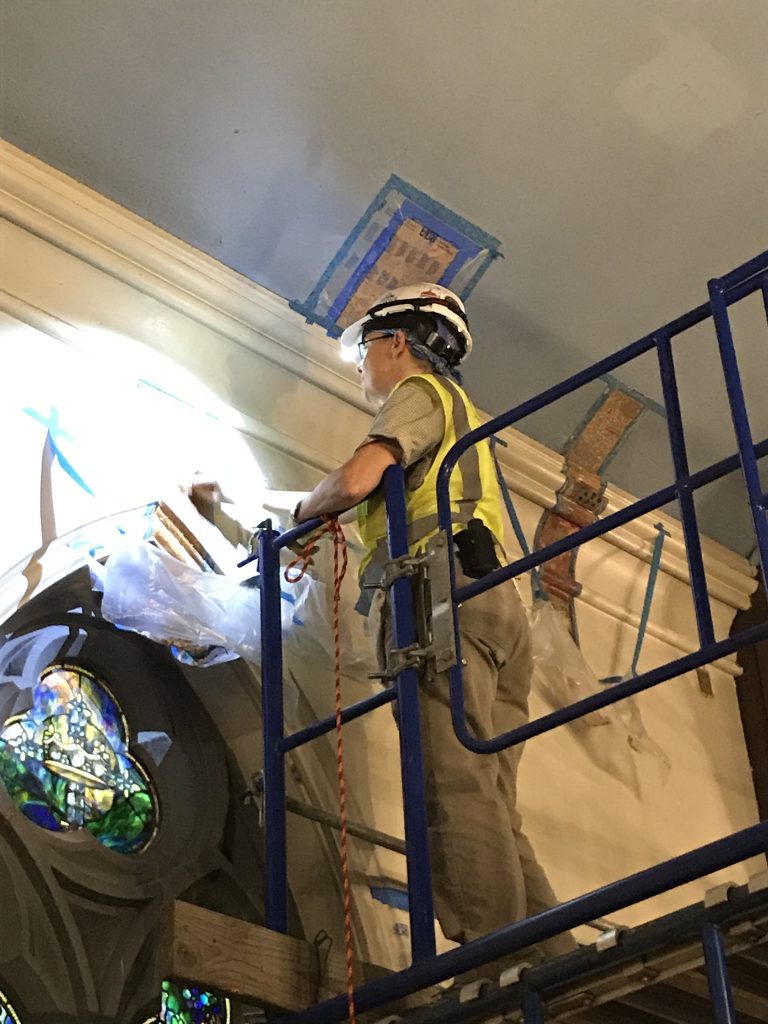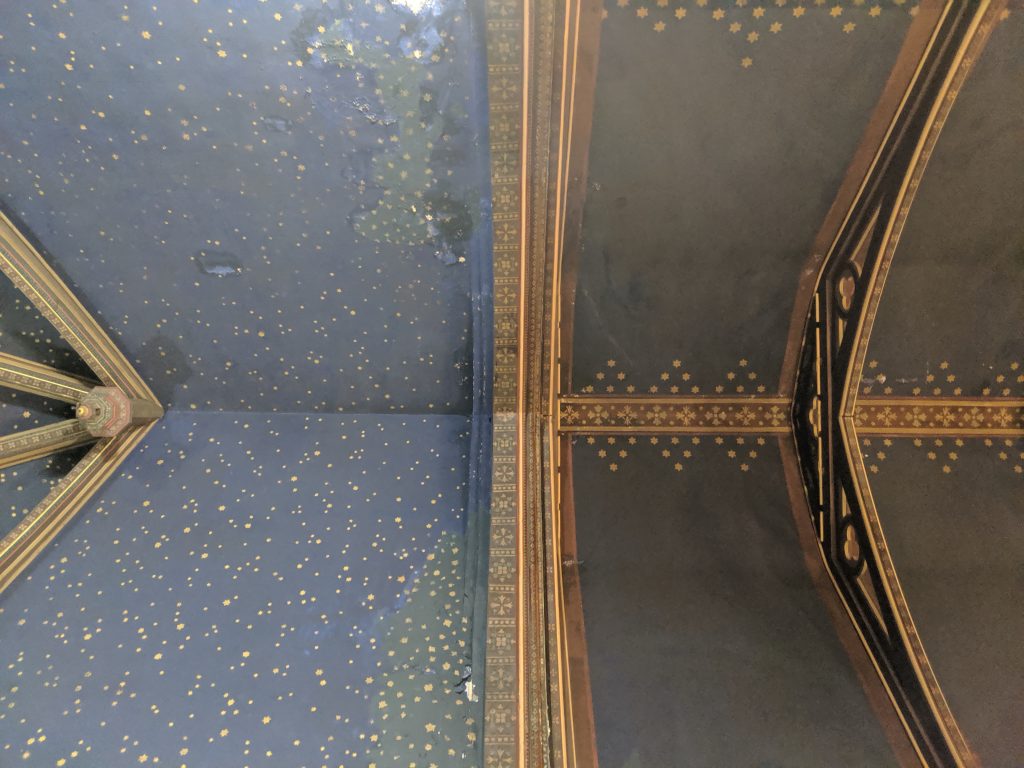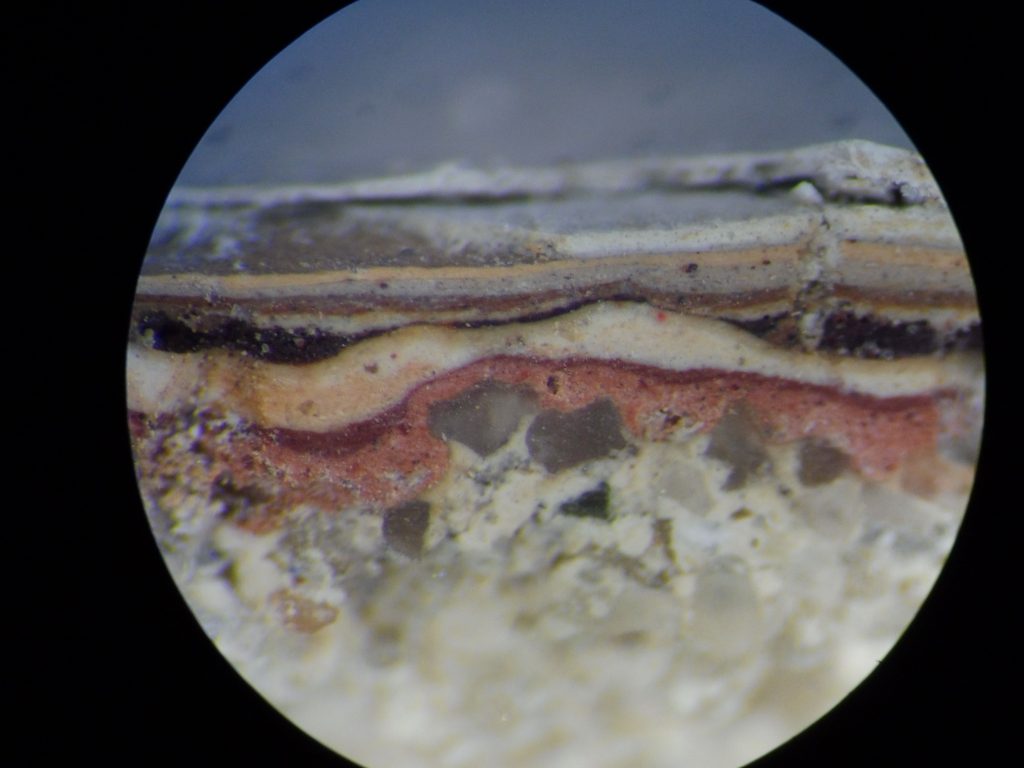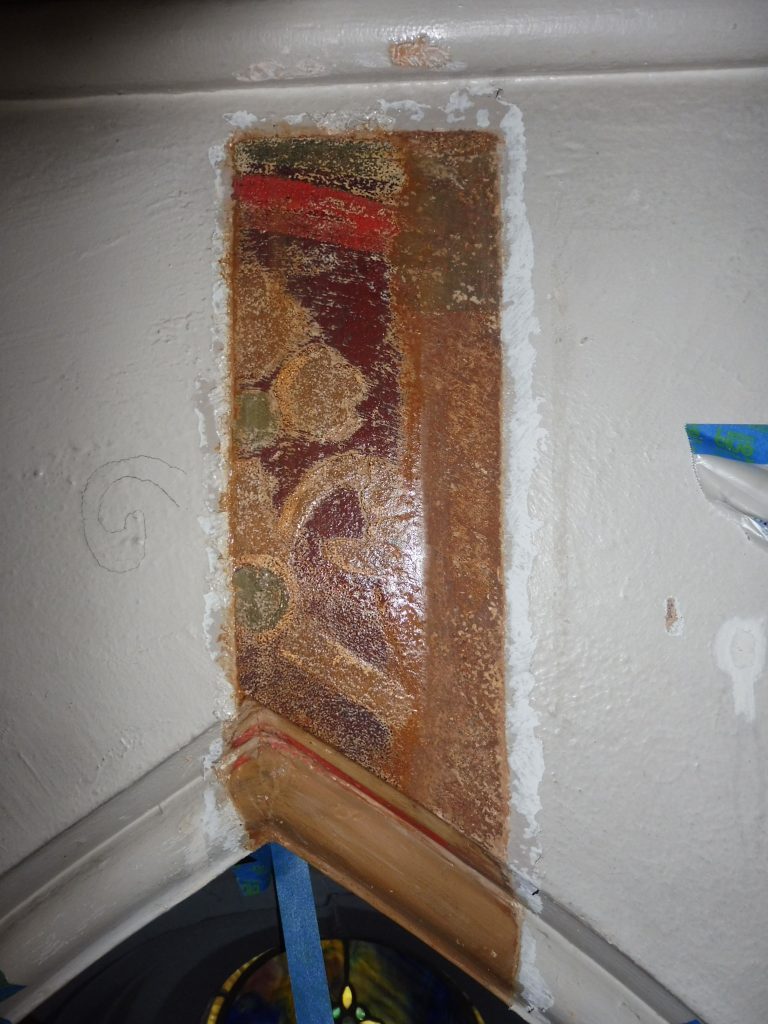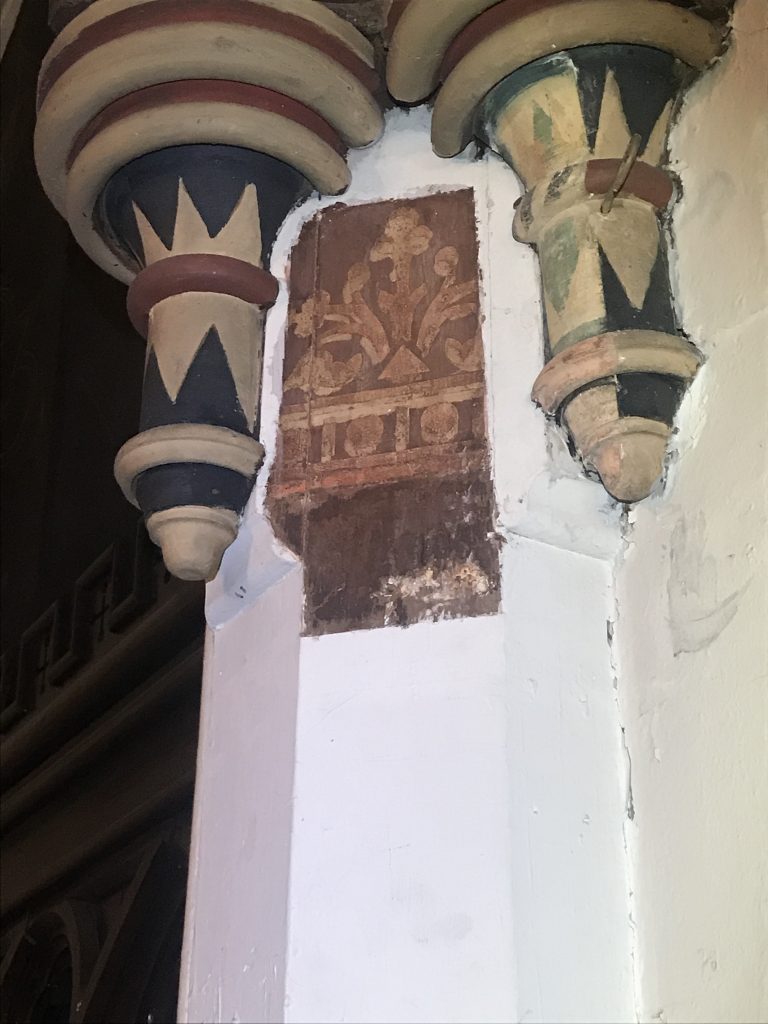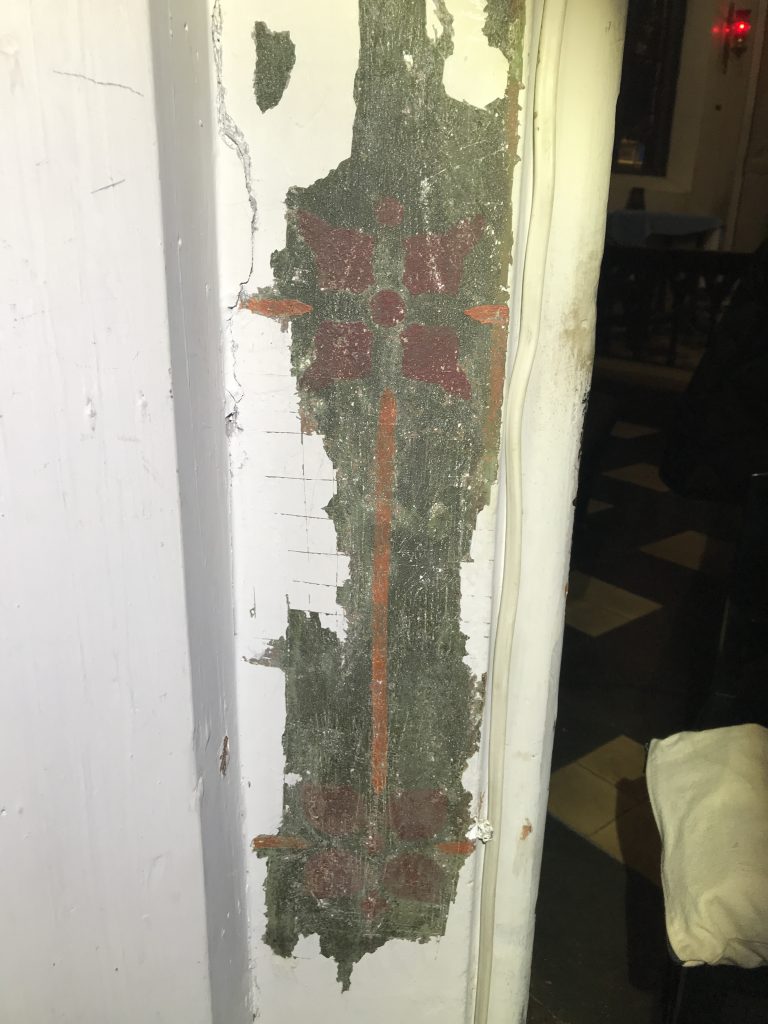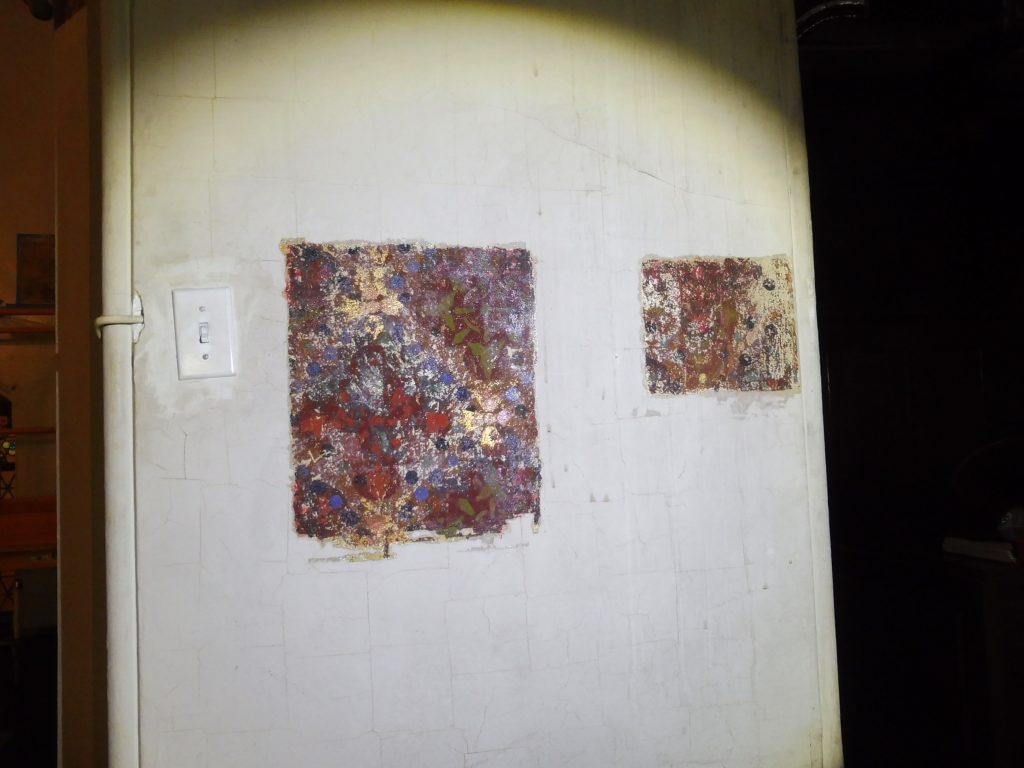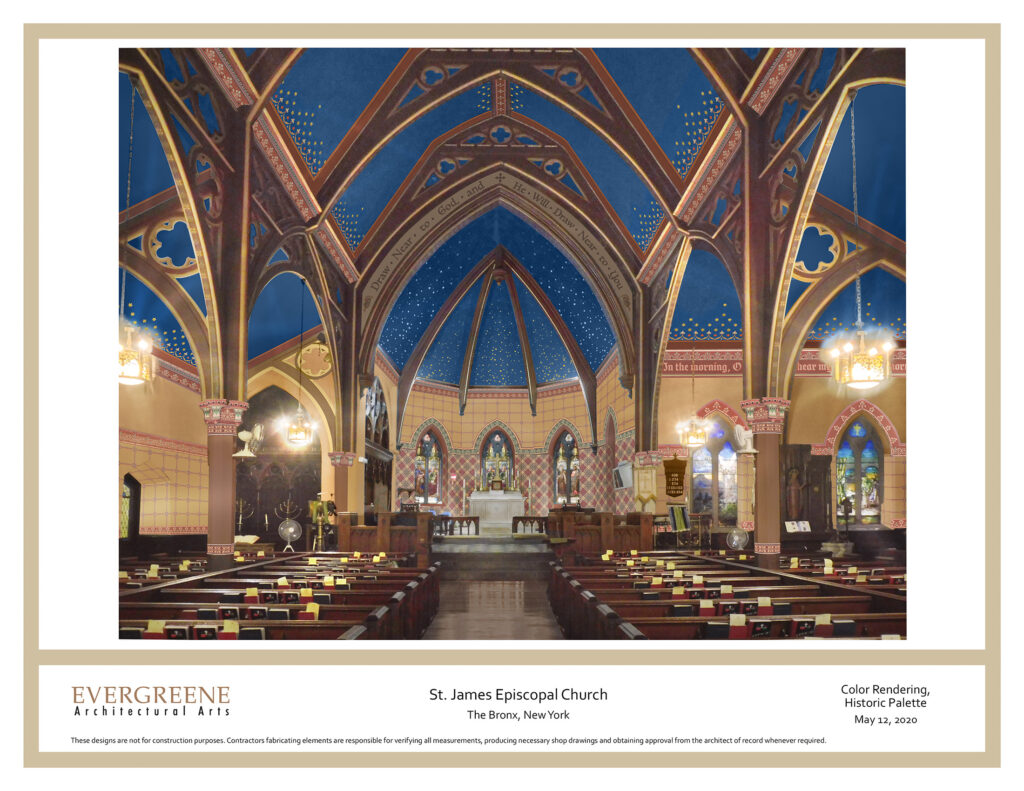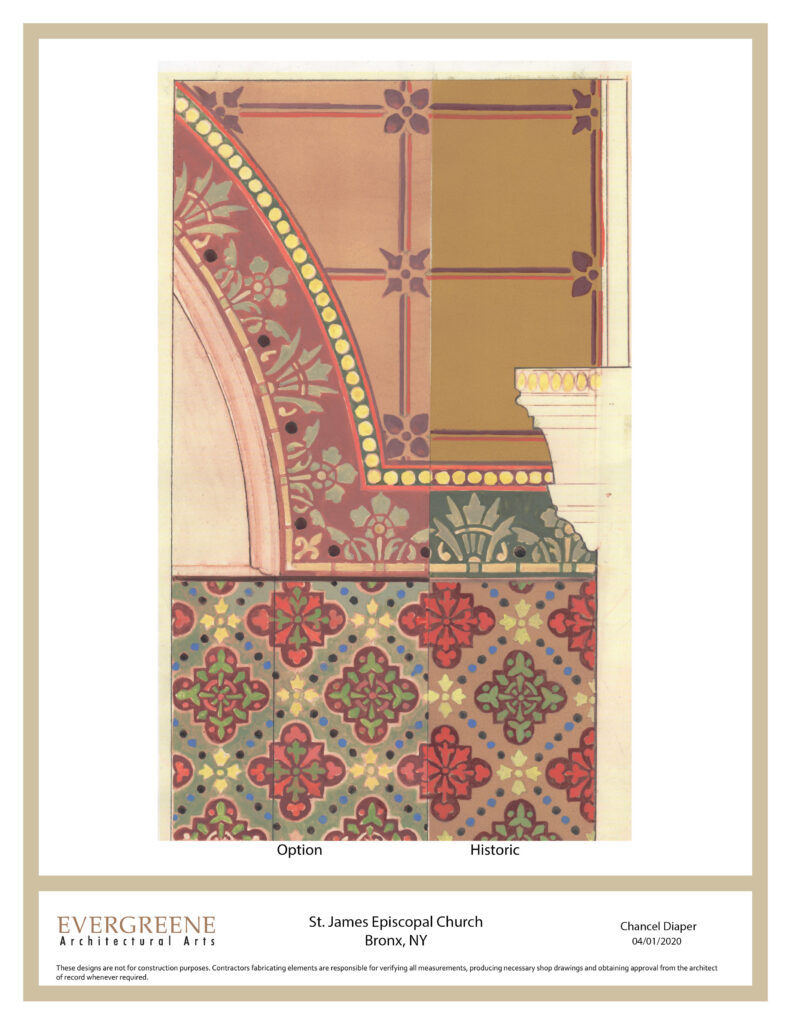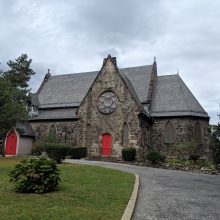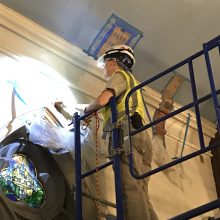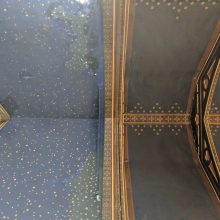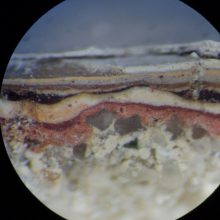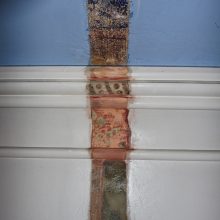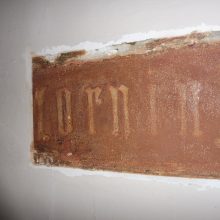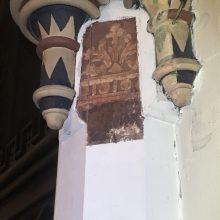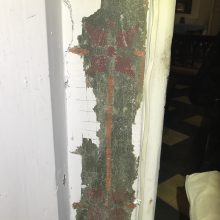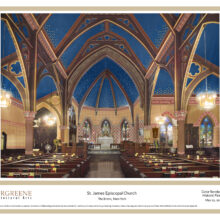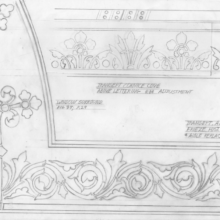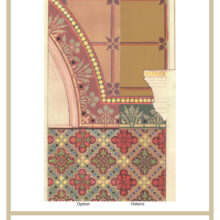St. James Episcopal Church - NDA—Private
The St. James Episcopal Church, located in Bronx, New York, was designed by English-born architect Henry C. Dudley in 1863. Dudley was a leading architect of the Protestant ecclesiological movement in North America. He designed numerous churches according to ecclesiastical principles in New England, as well as in numerous southern states including Alabama, South Carolina, Louisiana, and North Carolina.
St. James Episcopal Church and Parish House was designated a New York City Landmark in 1980, and listed on the National Register of Historic Places in 1982. EverGreene was retained by St. James Episcopal Church to investigate historic interior plaster and painted finishes in St. James Episcopal Church, located in Bronx, New York. The purpose of the finishes investigation is to support restoration efforts by documenting the condition of historic plaster walls and ceilings, as well as to gain a general understanding of historic decorative schemes and color palettes for wall, ceiling, and ornamental features of the chancel, nave, side aisles, and transept. Findings from the investigation were used by the EverGreene design studio to recreate the overarching designs for use during future restoration efforts.
The results of the plaster survey indicate that the historic plaster is in fair condition, with localized areas of loss, detachment, cracking, water damage, and inappropriate repairs. Damage and deterioration were graphically documented to identify the types, locations, severity, and general quantities of conditions which require repair. The results of the limited finishes investigation indicate that original decorative finishes remain beneath existing over-paint. Two to three distinct and successive campaigns of stencil decoration, executed in distemper paint, were revealed in exposure windows. These campaigns were meticulously documented by EverGreene conservators, and subsequently rendered by the EverGreene design team into a full-fledged design scheme intended to support restoration efforts currently being performed.

